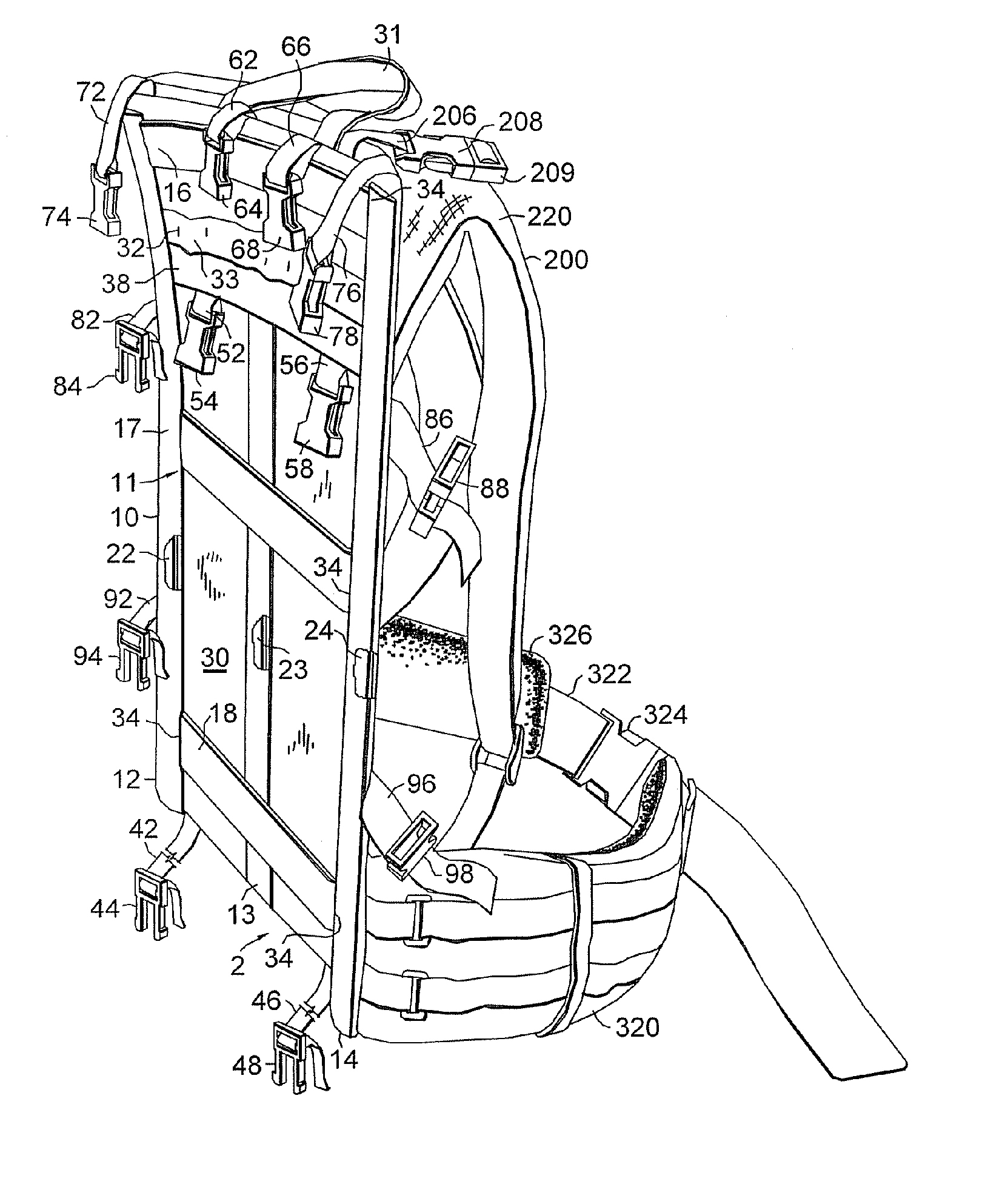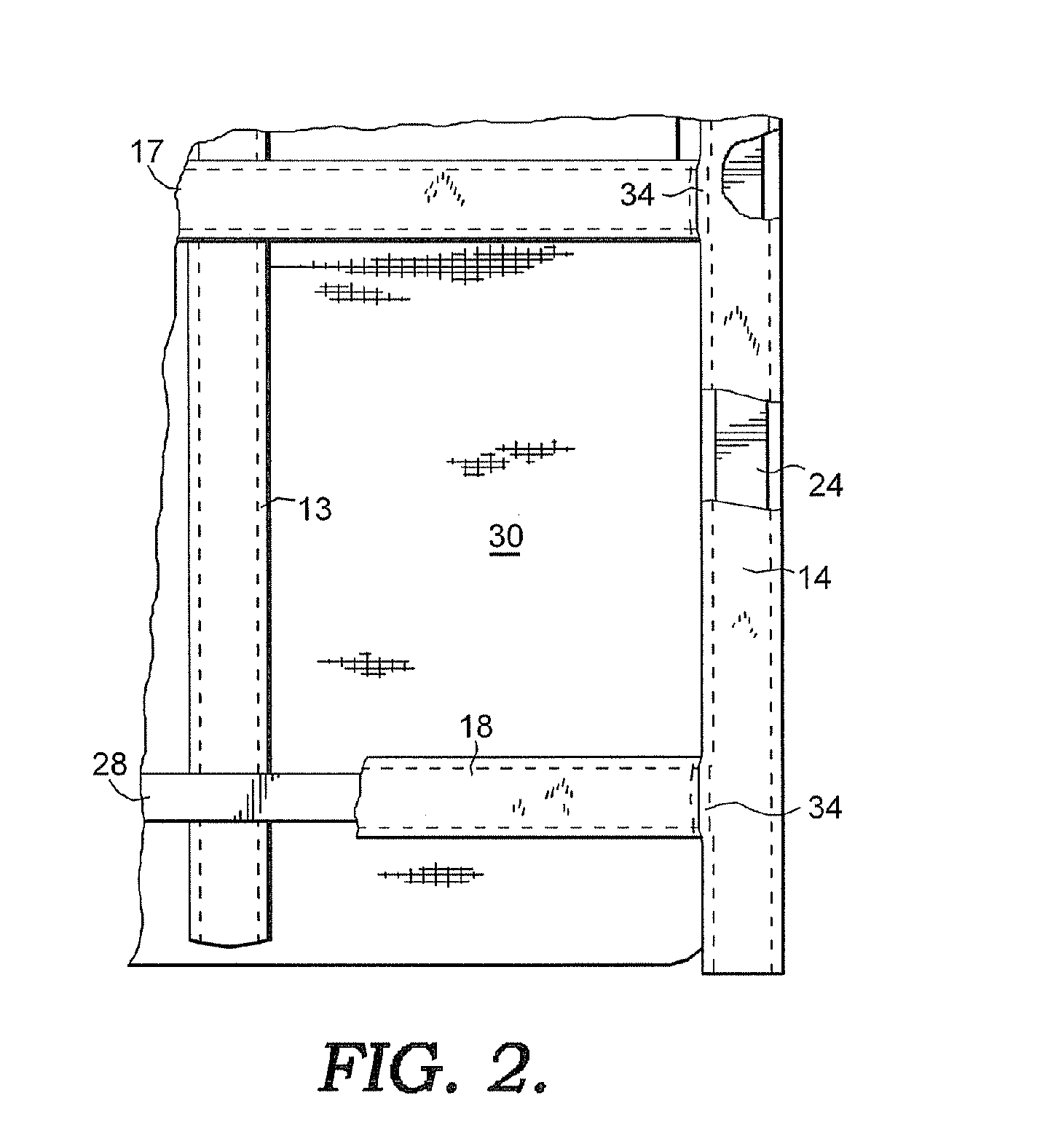Backpack frame system
a frame system and backpack technology, applied in the field of backpack frame system, can solve the problems of bag rips, scattered contents, and high tension on the pack bag, and achieve the effect of reducing the thickness of the pack frame and the front to rear thickness
- Summary
- Abstract
- Description
- Claims
- Application Information
AI Technical Summary
Benefits of technology
Problems solved by technology
Method used
Image
Examples
Embodiment Construction
[0030] Referring now to the FIGURES in greater detail, and initially to FIG. 1, a backpack frame system (“frame system”) is designated by the reference numeral 10. The frame system 10 includes a base frame assembly 11 coupled with a hip belt 320 and a shoulder strap assembly 201 with shoulder straps 220 and yoke 200 to form a backpack that may be worn by a user to transport various contents. The description of pack frame system 10 will use terms such as vertical and horizontal. These terms are used to describe the parts when the pack frame system 10 is in its normal upright orientation.
[0031] With additional reference to FIGS. 2, 3(a)(b), 4(a)(b) and 5, the base frame 11 includes a latticework of horizontally and vertically oriented semi-rigid support members or frame stays 22, 23, 24, 26, 27, and 28 that are encased in sleeves 12, 13, 14, 16, 17, and 18, respectively, and held in place by a membrane 30 forming various generally rectangular arrays of stays. Each of the frame sleeve...
PUM
 Login to View More
Login to View More Abstract
Description
Claims
Application Information
 Login to View More
Login to View More - R&D
- Intellectual Property
- Life Sciences
- Materials
- Tech Scout
- Unparalleled Data Quality
- Higher Quality Content
- 60% Fewer Hallucinations
Browse by: Latest US Patents, China's latest patents, Technical Efficacy Thesaurus, Application Domain, Technology Topic, Popular Technical Reports.
© 2025 PatSnap. All rights reserved.Legal|Privacy policy|Modern Slavery Act Transparency Statement|Sitemap|About US| Contact US: help@patsnap.com



